There is no question that animation in both video games and movies is becoming increasingly more realistic. Franchises such as the Marvel Cinematic Universe offer hundreds of hours’ worth of content. From movies and TV shows such as “Avengers: Infinity War” and “The Punisher” to videogames like PlayStation’s “Spider-Man”, Marvel has been able to establish a virtual world that viewers can get lost in. Digital environments are now rich with depth and detail. A viewer can look at a screen and believe that what they are looking at is a very real place. Animated characters in both mediums are now achieving a believability that surpasses past forms of analog representations, not just animations or cartoons moving swiftly through the screen. When viewers look into a character’s eyes, they can see a human being with real emotions. The technology that has developed that allows these animations to be as photorealistic as possible is called motion capture.
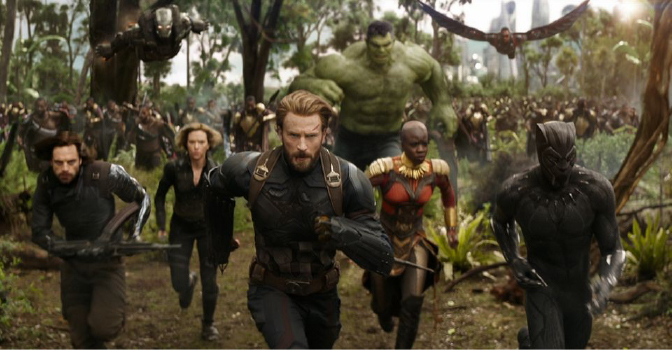
Studios Motion Pictures, 2019
Motion capture technology is used for recording the movements of human actors in order to animate digital character models. Motion capture paired with the recording of facial expressions and voice is called performance capture. Performance capture is widely used today in video games and movies to record actors playing a character that will be digitally created. Actors participating in this type of recording often wear a black skin tight suit with white round sensors attached. The sensors are put on key areas of the body, such as the legs, arms, fingers, waist, chest, and head. Cameras placed around the set track the sensors and record the movements of the actors while simultaneously sending that data to a computer where it is mapped to a 3-D digital character model. Facial expressions and subtle nuances in facial movement are recorded with a camera attached to a headpiece that sticks out in front of the actor. Small black dots are painted on the actor’s face to help better capture when a certain part of the face moves. A microphone is also used to capture the actor’s voice. Animators take all of this data and use it when crafting digital character models for a game or movie. All of these elements combined are what make up the performance capture of an animated character.
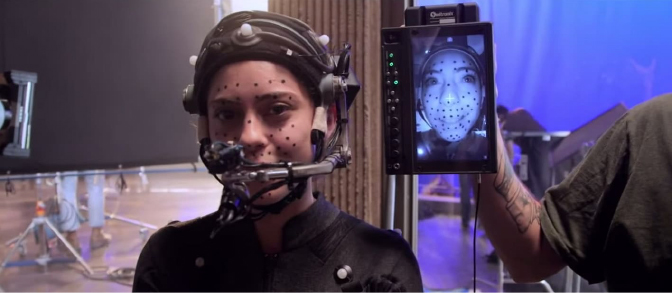
Before this technology was widely used, animators used a 19th century technique by Eadweard Muybridge called rotoscoping to capture an actor’s movements. Rotoscoping was a much more rigorous and time-consuming way of doing this and largely excluded actors from the process. Actors were recorded as if they were just being record for a live action movie. Animators would then use that footage, project it onto an animation table, and trace the footage frame-by-frame on animation cells that would then be photographed frame-by-frame to create the animation. The animated end result replicates the exact actions and movements of the actor. The original three Star Wars movies used rotoscoping to add the glowing lightsaber effect. The actors held matte sticks that were then later traced over by animators. Animators traced a line a little larger than the prop and added the glowing effect. The end result is something that will melt your face off.
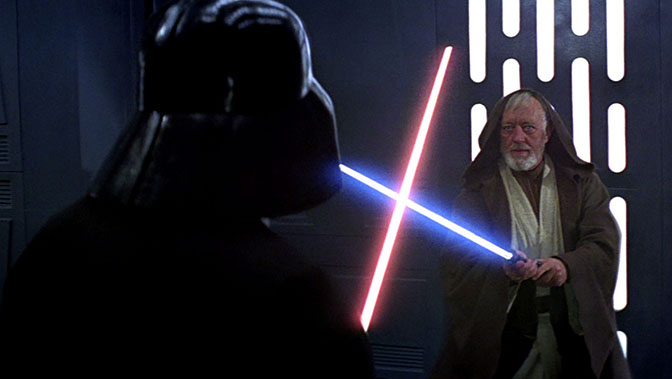
distributed by 20th Century Fox, 1977.
“Alita: Battle Angel”, a 2019 film by James Cameron, put the technology of motion capture to the test in one of its most successful uses on screen. “Alita: Battle Angel” takes place centuries in the future and focuses on a cyborg girl named Alita, who is found in a scrapyard by a cyber-doctor that “resurrects” her. When she awakens, she has no memory of who she is or the world she has found herself in. Being a cyborg, Alita is part machine and part human. In order to achieve this in realistic terms, the animation team on the movie opted to use motion capture technology to capture the actress’s movement, face, and voice to help sculpt the Alita character. In a behind the scenes video from the movie, producer on the film, Jon Landau, stated that “When we were making “Avatar”, I told people we don’t need to be photo-real because you can’t tell me what real is on Pandora. We only needed to be photographic. In Alita, we’re on Earth. Alita needs to be photo-real so that she can stand right next to Christoph Waltz and look together of one in the frame.”
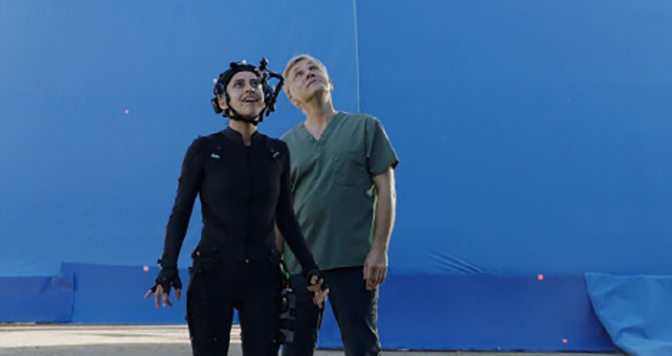
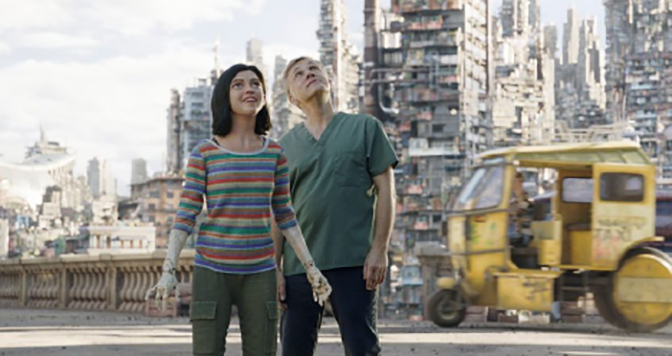
Click the video below to watch the behind the scenes video about the making of “Alita Battle Angel” and the use of motion capture technology in the film.
The use of motion and performance capture technology has blurred the line between real life and animation so significantly that sometimes it is hard to tell what is real and what is not. According to Skywell Software, the motion capture industry is fast growing and is expected to be an over 250 million dollar industry in five years. With the improvement of this technology, there may be a point to at which that blurred line almost doesn’t exist and I am looking forward to it.
The Future of Motion Capture Technology:
Further Exploration into Rotoscoping:
Studiobinder: https://www.studiobinder.com/blog/what-is-rotoscope-animation-definition/
Richie Mroz is Communications student interested in the technology behind the development of video games and movies. As a fan of these industries, he hopes to discover more about the production and process behind both mediums and hopes he can pass what he learns on to others.


